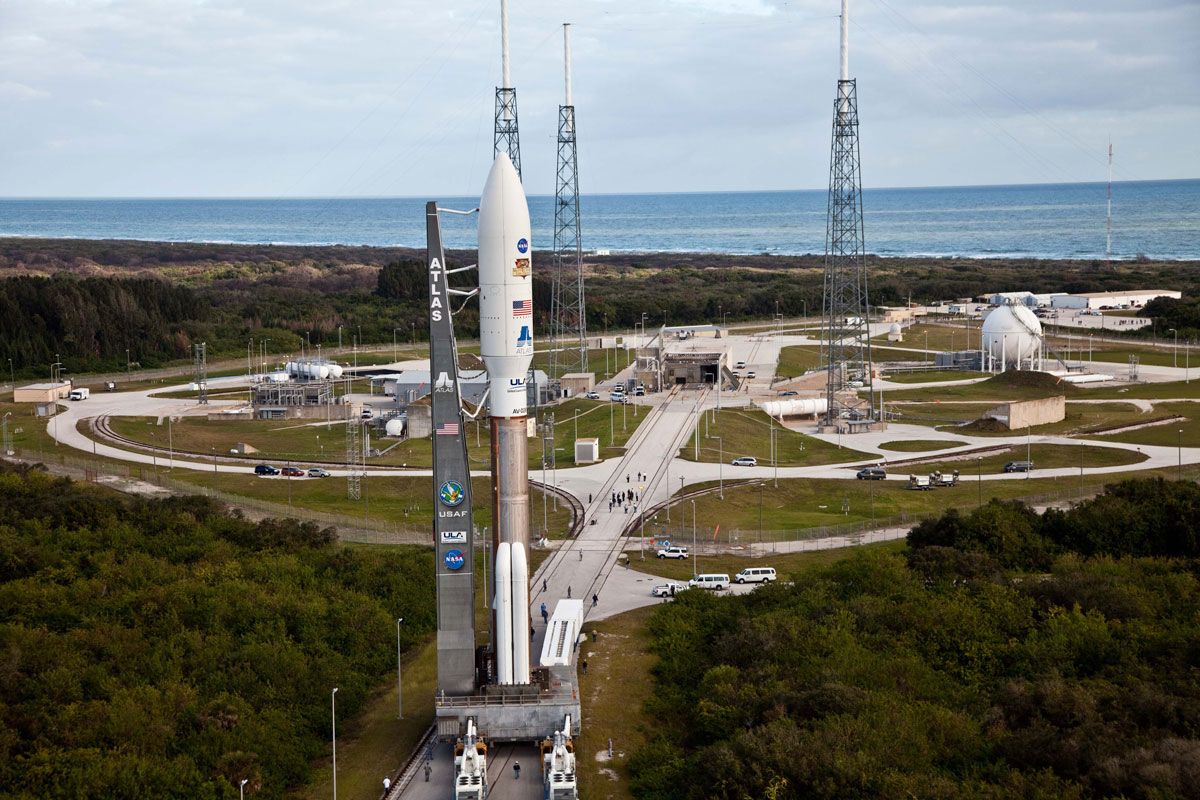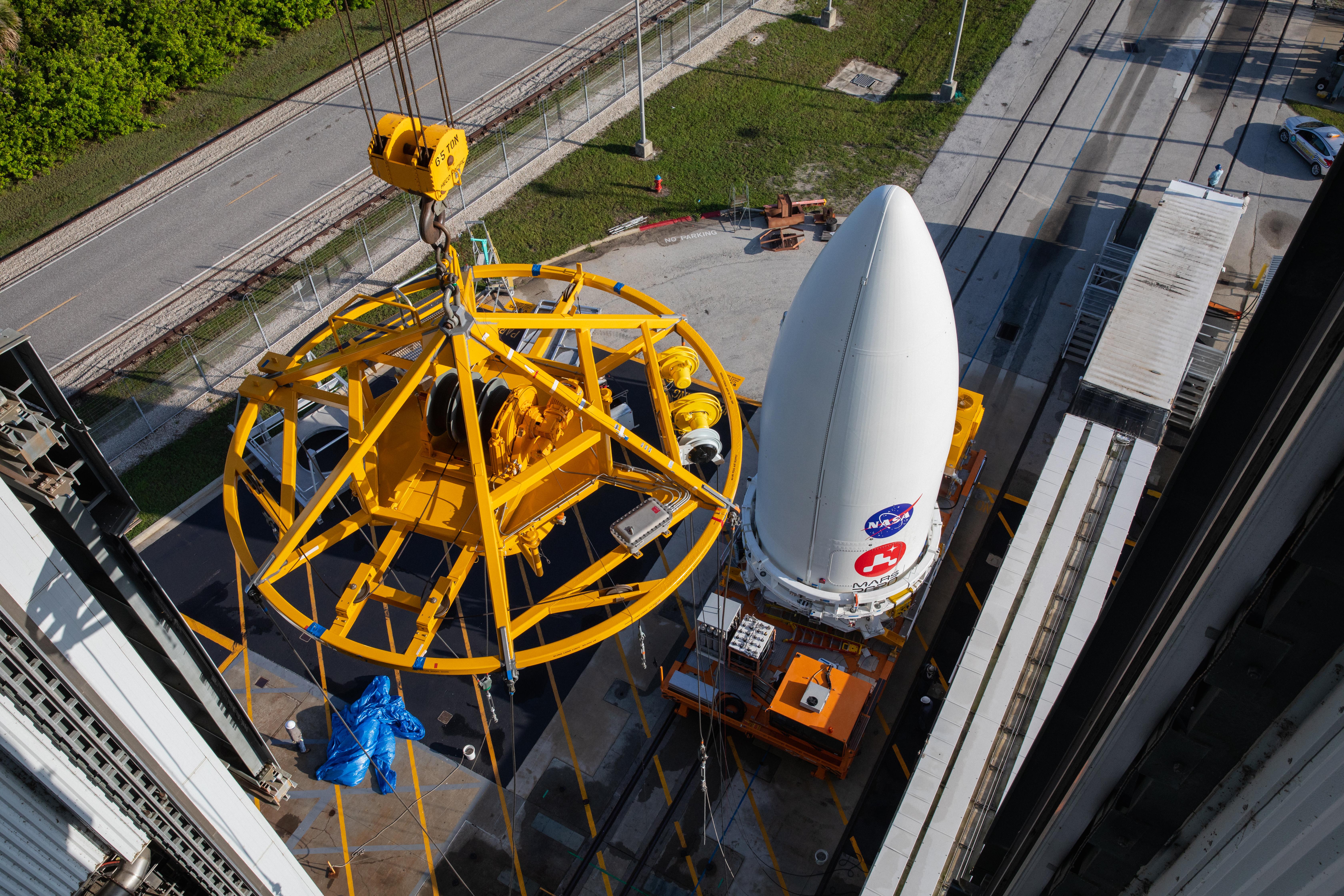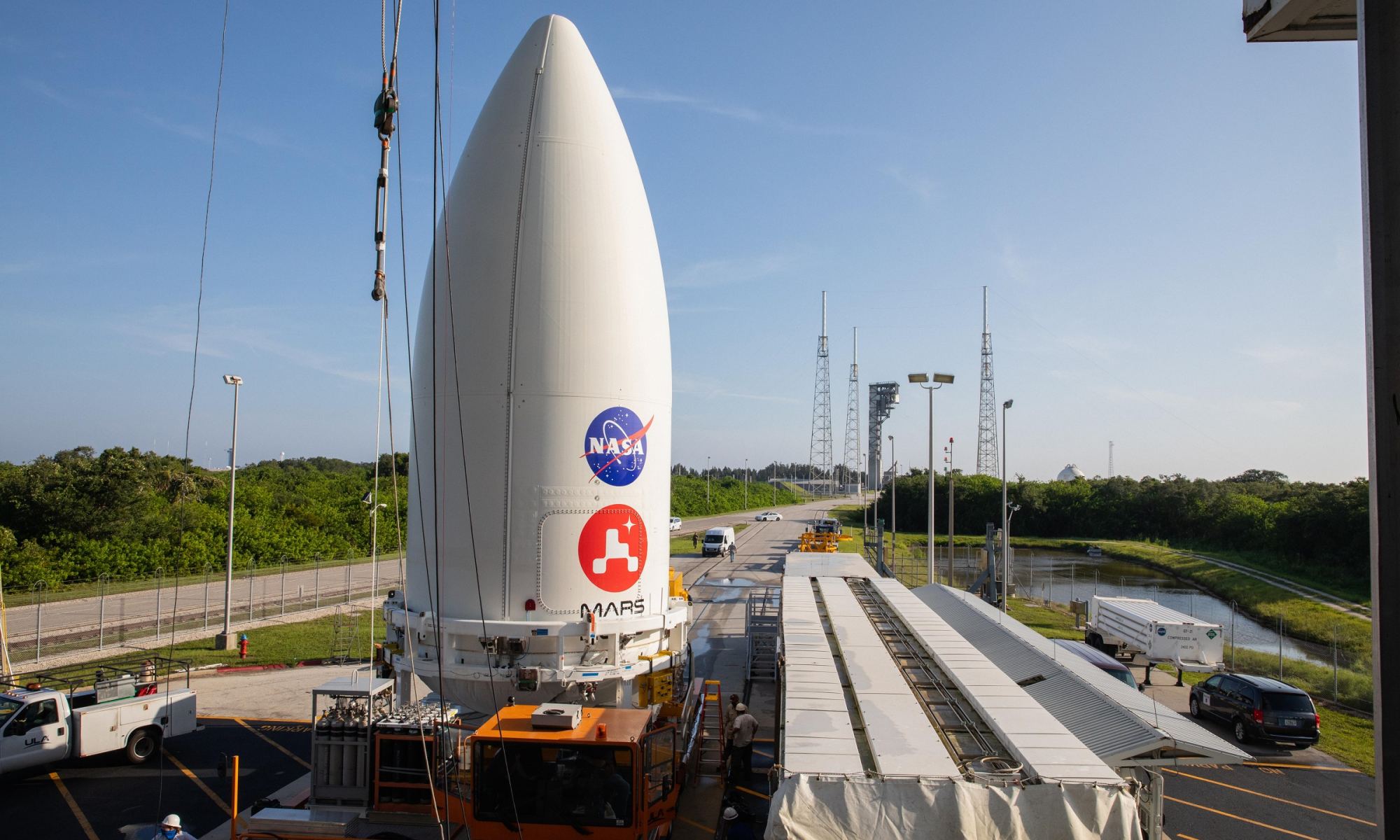This summer – between July 30th and August 15th – NASA’s Perseverance rover will begin its long journey for Mars. Once it arrives (by February of 2021), it will join its sister mission, the Curiosity rover, and a slew of other robotic landers and orbiters that are busy characterizing the atmosphere and surface of the Red Planet. Ultimately, the goal of Perseverance is to determine if Mars once supported life (and maybe still does!)
Just last week (July 7th), the Perseverance rover and all the other elements of the Mars 2020 spacecraft were loaded aboard the United Launch Alliance (ULA) Atlas V rocket that will send it on its way. This included the aeroshell, cruise stage, and descent stage, which will be responsible for transporting the Perseverance rover during its six-month journey to Mars and depositing it on the surface.
These were loaded into a payload fairing (nose cone) and deposited atop the booster by the 60-ton crane atop the Vertical Integration Facility at Space Launch Complex 41, located at the Cape Canaveral Air Force Station in Florida. Engineering teams then made all the physical and electrical connections between the fairing and booster that will ensure a safe launch.

As John McNamee, the project manager for the Mars 2020 Perseverance rover mission at NASA’s Jet Propulsion Laboratory (JPL), shared in a NASA press statement:
“I have seen my fair share of spacecraft being lifted onto rockets. But this one is special because there are so many people who contributed to this moment. To each one of them I want to say, we got here together, and we’ll make it to Mars the same way.”
With the mating of the spacecraft and booster now complete, the final testing of both (individually and together) has commenced. By July 28th, two days before the launch window opens, the rocket and spacecraft will depart the Vertical Integration Facility and travel by rail to its launch pad – located 550 meters (1,800 feet) away.
Originally, the launch was scheduled to take place between July 17th and August 11th, but was pushed to July 30th and August 15th due to launch vehicle processing delays. This was due to a technical issue with the liquid oxygen sensor line during the Wet Dress Rehearsal (WDR), which was apparently due to a small leak in the weld of the line (which has since been repaired and tested).

Regardless of when it launches, the Perseverance rover will land in the Jezero Crater on Feb. 18th, 2021. Once there, it will use its advanced suite of seven scientific instruments to collect and analyze rock and soil samples for signs of past microbial life. The Jezero Crater is considered a prime location to do this because of the preserved delta that indicates that water once flowed through the region and deposited sediment over time.
Based on spectra obtained from orbit, the sediments that form this delta has been shown to contain clays and carbonates. If microbial life once existed in Mars’ water-bearing regions, then this would be a good place to find fossilized evidence of it. Other objectives include characterizing Mars’ climate and geology, collecting and cacheing samples for return to Earth, and paving the way for human exploration of the planet.
Perseverance is one of several missions that will be launching for Mars this summer. This includes the United Arab Emirate’s Hope orbiter and China’s Tianwen-1 orbiter, lander, and rover mission. And in about two years’ time, the ESA’s ExoMars 2022 mission will also launch, which will consist of the Russian Kazachok surface platform and the European Rosalind Franklin rover.
Martian exploration is kicking into high-gear. And it’s all leading up to the day when the first astronauts set foot on the Red Planet!
Further Reading: NASA

